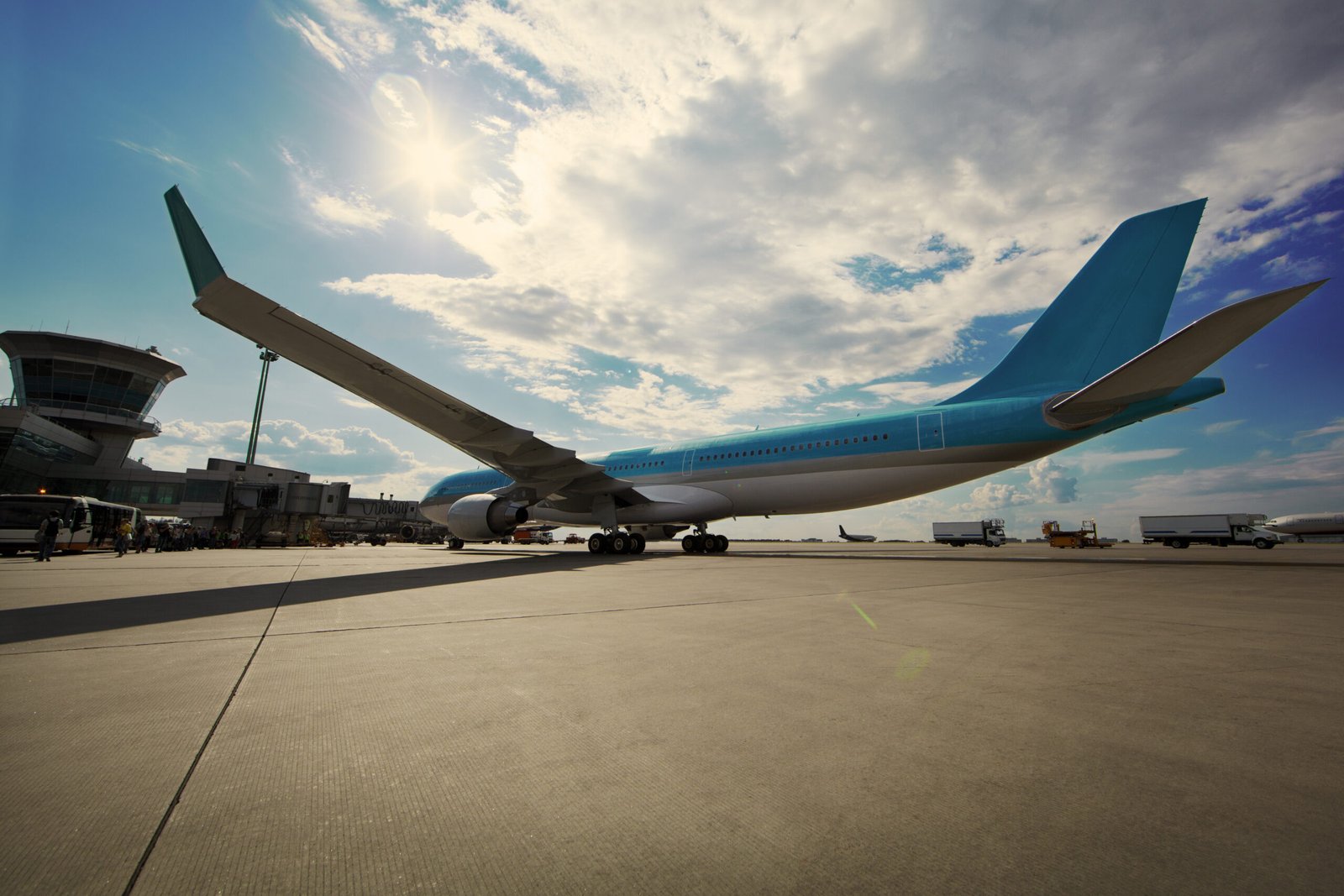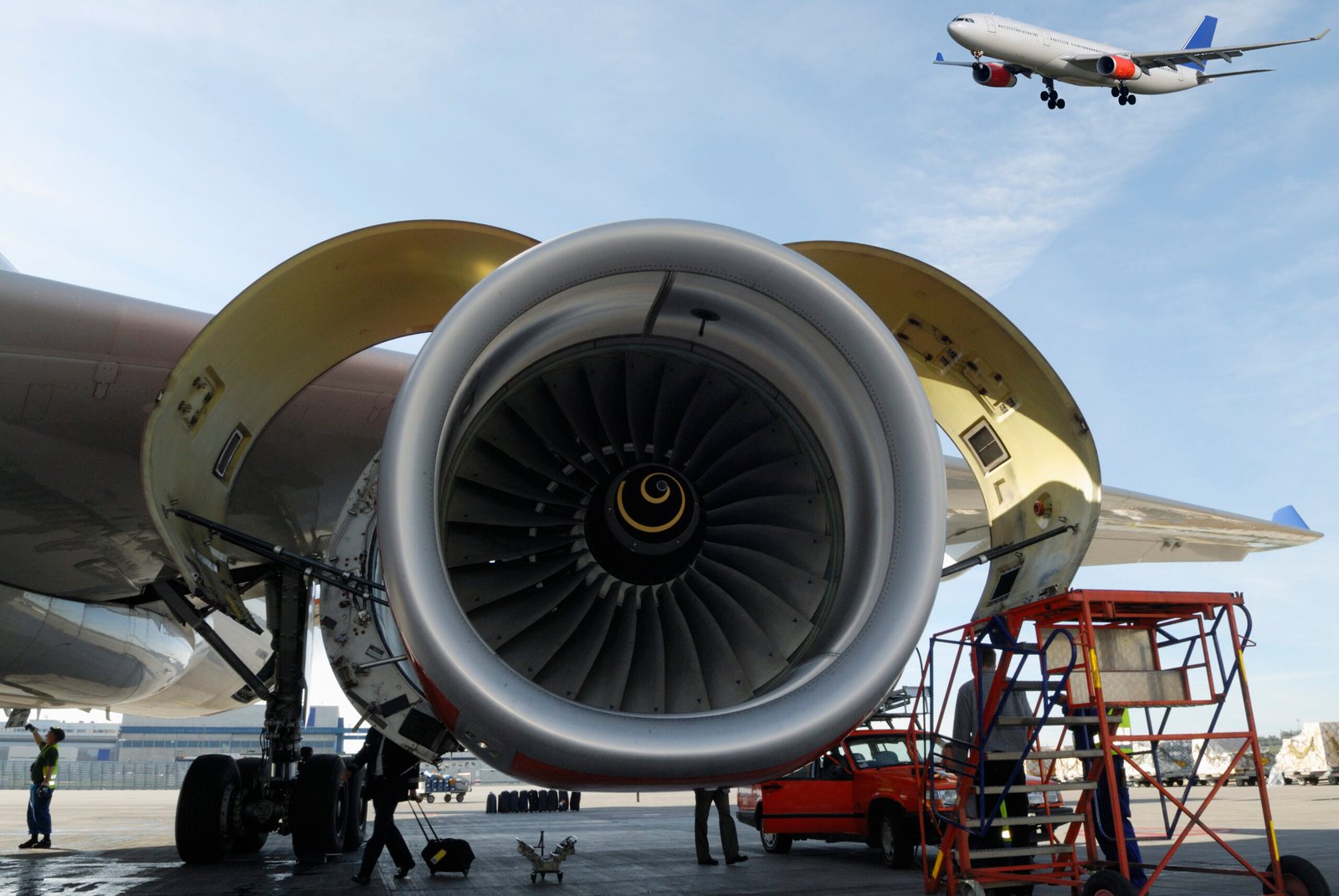Aviation Community
Navigating the Skies: A Beginner’s Guide to Understanding Aviation
Embarking on a journey into the world of aviation can be exhilarating yet overwhelming. With so many paths one can take, it’s crucial to understand the various options available. From specialized schools to an abundance of online resources, this guide aims to illuminate your route through the skies.
### Types of Aviation Schools and Courses
When considering a career in aviation, the first step is selecting the right type of school. Here are some key categories:
1. **Flight Schools**: These institutions focus primarily on training pilots. They offer programs ranging from private pilot certificates to commercial licenses and even advanced ratings for instrument flying.
2. **Airline Transport Pilot (ATP) Schools**: For those aspiring to fly for commercial airlines, ATP schools provide intensive training specifically tailored for airline operations, including multi-engine flying and crew resource management.

3. **Aviation Maintenance Schools**: If you’re more interested in keeping aircraft in top shape rather than piloting them, consider enrolling in an aviation maintenance program. Here, students learn about airframe and powerplant systems, gaining skills necessary for FAA certifications.
4. **Aerospace Engineering Programs**: Universities often feature degree programs focused on aerospace engineering—perfect for those who wish to design and develop aircraft or spacecraft.
5. **Air Traffic Control Training Programs**: These courses prepare individuals for careers as air traffic controllers, teaching them how to manage aircraft safely within controlled airspace.
6. **Simulator Training Facilities**: Many flight schools now utilize advanced simulators that replicate real flying conditions without leaving the ground—ideal for practicing maneuvers or preparing for exams.
### Top Aviation Blogs and Websites
Staying informed about aviation trends is vital for any aspiring aviator or enthusiast. Here are some excellent blogs and websites worth bookmarking:
**AOPA (Aircraft Owners and Pilots Association)**: An invaluable resource packed with articles on flying tips, legal regulations, and industry news.
**Airliners.net**: A vast repository of photographs and forums where aviation enthusiasts share their experiences.
**Flying Magazine**: This publication covers everything from pilot techniques to product reviews.
**Pilot’s Digest**: A blog that offers insights into pilot life while emphasizing safety practices.
**AvWeb**: Focused on news relevant to pilots, AvWeb also features podcasts covering current topics in aviation.
For social media aficionados:
Follow hashtags like #aviationlife or #pilotlife on Instagram for stunning visuals from fellow aviators.
Join Facebook groups such as “Pilots Without Borders” or “Women in Aviation” to network with others who share your passion.
### FAA Flight Schools & Simulators
The Federal Aviation Administration (FAA) maintains a comprehensive list of accredited flight schools across the country—each providing different specialties tailored to student needs. When searching for a suitable school, look out for those that offer both ground instruction and simulator training; these elements combine theoretical knowledge with practical application effectively.

Moreover, utilizing high-quality flight simulators can significantly enhance your learning experience by allowing you to practice critical scenarios without real-world risks involved. Many reputable schools incorporate state-of-the-art technology into their curricula that mimic actual cockpit environments.
In conclusion, understanding aviation is not merely about dreaming of soaring through clouds but involves meticulous planning and education. By exploring various types of schools, engaging with numerous online platforms dedicated to this field, and taking advantage of FAA resources—and perhaps even virtual simulators—you’re well on your way toward conquering the skies! Remember that every seasoned pilot once started just where you are now—so buckle up; adventure awaits!
Behind the Cockpit: A Day in the Life of an Airline Pilot
Ever wondered what it’s like to soar through the skies, commanding a massive airplane and ensuring hundreds of passengers arrive at their destinations safely? Being an airline pilot is not just a job; it’s a passion that requires extensive training, dedication, and skill. Let’s take you behind the scenes and explore what it takes to become a pilot, including aviation schools, useful resources, and the indispensable role of FAA-approved training programs.
*Aviation Schools: Navigating Your Path**
The journey to becoming an airline pilot often begins with formal education. Aviation schools offer various types of courses tailored for aspiring pilots. Generally, these can be categorized into:
1. **Degree Programs:** Many universities provide bachelor’s degrees in aviation science or aeronautical engineering. These programs encompass flight training along with essential coursework in subjects like meteorology and navigation.
2. **Certificate Programs:** For those looking for a quicker route into the cockpit, certificate programs focus specifically on the required flight hours and practical skills needed for obtaining private or commercial pilot licenses.
3. **Accelerated Flight Schools:** Ideal for individuals eager to fast-track their careers, these schools offer intensive flight training designed to equip students with everything they need within months.
4. **Online Courses:** Some institutions have begun offering online modules covering theoretical aspects of aviation—perfect for those balancing work or other commitments alongside their studies.
Choosing the right path depends on personal goals and timelines but rest assured that each type offers vital insights into aviation fundamentals.
*Resources You Can Rely On**
In today’s digital age, staying informed is crucial. Fortunately, numerous blogs and websites cater to both novice enthusiasts and seasoned professionals alike:
**AirlinePilotCentral.com**: A comprehensive resource that provides information about airlines’ hiring trends along with forums where pilots share experiences.
**Flying Magazine**: This publication delivers articles about flying techniques, safety tips, and reviews on new aircraft—all invaluable for any aspiring aviator.
**Piper Aviators Blog**: Dedicated to sharing tales from fellow pilots along with tips on maintaining planes—an excellent read for hands-on learners.
Social media platforms also serve as vibrant communities where pilots connect:
Follow hashtags like #PilotLife or #AviationDaily on Instagram to catch stunning aerial shots while learning from industry veterans.
Join Facebook groups such as “Aviation Enthusiasts” or “Future Pilots” where members share advice and opportunities related to flight training.
*FAA Flight Schools & Simulators**
The Federal Aviation Administration (FAA) plays a pivotal role in regulating flight training standards in America. FAA-approved flight schools are essential for anyone serious about becoming an airline pilot—they adhere strictly to safety regulations while providing high-quality instruction.
These schools often boast advanced simulators that replicate real flying conditions without leaving the ground! These state-of-the-art devices allow trainees to practice maneuvers they might encounter during actual flights—perfecting everything from emergency procedures to navigation techniques without putting anyone at risk.
As your day unfolds behind the cockpit—from pre-flight checks through cruising altitude—you’ll realize that every moment spent learning contributes toward achieving your dream of commanding an aircraft. Embrace this exciting journey filled with challenges but equally rewarding milestones; after all, adventure awaits just beyond the horizon!

Aviation Adventures: The Untold Stories of Pilots and Their Planes
Aviation is not just a mode of transportation; it’s a thrilling adventure that transforms dreams into reality. Whether soaring through clouds or navigating complex airspace, pilots share exhilarating tales that often go untold. But behind every extraordinary flight lies rigorous training and education—a journey that begins in aviation schools.
*Types of Aviation Courses**
Aviation schools cater to various interests and career paths within the field. For aspiring pilots, private pilot courses provide foundational skills for flying small aircraft, while instrument rating courses delve deeper into navigation and weather conditions. Commercial pilot programs prepare students for a professional career, teaching advanced maneuvers and business operations associated with aviation.

For those intrigued by the technical side, maintenance technician courses cover aircraft systems, troubleshooting, and repair techniques—essential knowledge for keeping planes in top shape. Additionally, specialized programs like flight instructor ratings allow seasoned pilots to share their expertise with the next generation of aviators.
Flight simulation offers an immersive experience without leaving the ground. Many institutions now provide state-of-the-art simulators that replicate real-world flying scenarios. These setups allow students to practice emergency procedures or complex maneuvers in a controlled environment before taking to the skies.
*Exploring Aviation Blogs and Websites**
In this digital age, countless resources are available online for aviation enthusiasts. Blogs like “AirlineReporter” offer insights into airline industry trends while showcasing unique travel experiences from frequent flyers. “The Flying Engineer” delves into technical discussions about aircraft maintenance and innovations in engineering—perfect for those who want to merge passion with profession.
Social media platforms also play a significant role in connecting aviators and enthusiasts alike. Instagram accounts such as “@pilotlife” showcase breathtaking aerial photography alongside personal stories from pilots around the globe. On Twitter, hashtags like #AvGeek create vibrant communities where users can share news articles, flight experiences, or even their favorite aviation memes.
YouTube has become an invaluable resource too; channels like “Mentour Pilot” break down complex aviation topics into comprehensible segments while sharing real-life cockpit experiences that inspire awe among budding aviators.
*FAA Flight Schools: Your Gateway to the Skies**
When it comes to formal training in the United States, FAA-accredited flight schools stand out as beacons of excellence. These institutions comply with stringent regulations set forth by the Federal Aviation Administration (FAA), ensuring quality education for future pilots.
Many recognized schools offer comprehensive programs tailored to different skill levels—whether you’re starting from scratch or looking to advance your credentials with multi-engine ratings or type-specific endorsements. With hands-on instruction paired with theoretical coursework, students gain a holistic understanding of what it means to be part of this dynamic industry.

Additionally, simulators play an essential role within these schools’ curriculums. They provide practical experience without exposing students to real-world risks during crucial learning phases—allowing them to develop confidence before taking control of an actual airplane.
In conclusion, aviation is filled with remarkable stories shaped by passionate individuals who have dedicated their lives to mastering the art of flying. The journey begins at aviation schools where diverse courses lay the groundwork for future adventures in the skies—enriching our understanding of both technology and human perseverance along the way! So buckle up; your own aviation adventure awaits!
From Takeoff to Landing: A Day in the Life of a Commercial Pilot
The world of aviation is as thrilling as it is intricate, offering a unique blend of science, technology, and adventure. For those aspiring to soar through the skies as commercial pilots, understanding what goes into their daily lives is essential. This journey often begins with education, which can take various forms depending on individual goals.
## Aviation Schools: Types of Courses
Aviation schools come in many flavors, each catering to different aspirations within the field. Traditional universities offer comprehensive degree programs in aeronautical science or aviation management. These four-year degrees not only provide flight training but also cover essential subjects like air traffic control, meteorology, and aviation law.
For those seeking a quicker path, vocational schools and flight academies focus primarily on flight training. Programs here can range from private pilot licenses to advanced certifications for multi-engine aircraft. Many of these institutions integrate hands-on experience with state-of-the-art simulators, allowing students to hone their skills before stepping into a real cockpit.
Online courses are also gaining popularity among aspiring pilots who wish to supplement their education while maintaining flexibility. These courses generally cover theoretical knowledge—like navigation principles and regulations—enabling students to learn at their own pace before undertaking practical training.

## The Digital Landscape: Aviation Blogs and Websites
As part of their ongoing education and networking, pilots often turn to various online resources for insights and updates about the industry. Here are several noteworthy blogs and websites that serve as excellent sources of information:
1. **Airline Pilot Central** – A hub for news articles related to airlines, pilot jobs, salary data, and industry trends.
2. **Flying Magazine** – Offers tips on flying techniques alongside reviews of new aircraft technologies.
3. **AOPA (Aircraft Owners and Pilots Association)** – Provides resources for both student pilots and seasoned aviators including safety seminars.
4. **Pilot’s Discretion** – A community-driven blog where pilots share personal stories from their flying experiences.
Social media platforms are another great way for pilots to connect with peers worldwide. On Twitter or Instagram, you’ll find hashtags like #AvGeek or #PilotLife that lead you down rabbit holes filled with breathtaking aerial shots and engaging narratives from fellow aviators.
## FAA Flight Schools: Training Resources
In the United States, the Federal Aviation Administration (FAA) certifies numerous flight schools across the country that uphold rigorous standards for pilot training. When searching for an FAA-approved school or airplane simulator facility, prospective pilots should consider factors such as location convenience, available aircraft types for training purposes, instructor qualifications, and overall reputation in the aviation community.
Many established flight schools offer access to advanced simulators that mimic real-life flying conditions without ever leaving the ground—ideal for mastering emergency procedures or fine-tuning your piloting skills before hitting the skies.
## Conclusion
While every day in a commercial pilot‘s life varies—from pre-flight checks at dawn to landing after a long haul—the foundation laid during initial training remains critical throughout their career journey. Aspiring aviators must immerse themselves in diverse educational paths while staying connected through rich networks found online. With dedication and continuous learning from reputable sources within this dynamic field of aviation, anyone can chase their dreams above the clouds!
A Pilot’s Perspective: Insider Tips for Aspiring Aviators
Embarking on the journey to become a pilot is an exhilarating adventure filled with dreams of soaring through the skies. However, that path can be paved with challenges and uncertainties. As an aviator who’s navigated this course, I’m excited to share essential insights, particularly tailored for those looking to take flight in their aviation careers.
*Choosing the Right Aviation School**
One of the most crucial steps in your journey is selecting an aviation school that aligns with your goals. Aviation schools typically offer various types of courses catering to different aspirations:
1. **Private Pilot License (PPL):** Ideal for beginners, this course introduces you to the fundamentals of flying and grants you permission to fly solo or with passengers under visual flight rules.
2. **Commercial Pilot License (CPL):** Aimed at serious aviators wanting to turn their passion into a profession, this program dives deeper into navigation, meteorology, and advanced flying techniques.
3. **Instrument Rating:** For those who wish to fly in varying weather conditions, this training teaches pilots how to control aircraft using instruments rather than visual references.
4. **Flight Instructor Certificate (CFI):** If sharing knowledge excites you, consider becoming a flight instructor. This certification allows you to teach aspiring pilots while honing your own skills.
5. **Airline Transport Pilot License (ATPL):** The pinnacle of pilot certifications, this license is required for those aiming for careers as airline captains or other high-level positions within commercial aviation.
Each of these pathways opens doors not only to personal fulfillment but also to diverse career opportunities across the aviation sector.
*Explore Online Resources**
In today’s digital age, connecting with fellow enthusiasts and seasoned professionals has never been easier. Here are some valuable online resources where aspiring aviators can find inspiration and information:
**Aviation Blogs:** Websites like *The Flight Deck* and *Aviation Weekly* provide insights from industry veterans about trends, tips, and experiences that could shape your understanding of aviation.
**Websites:** Check out *SkyVector*, which offers route planning tools alongside aeronautical charts crucial for every pilot’s toolkit.
**Social Media Sites:** Platforms like Instagram and Twitter are brimming with accounts dedicated solely to aviation content—follow hashtags like #PilotLife or #AviationGeek for daily doses of aerial inspiration!
Engaging with these platforms can help you stay updated on industry developments while also allowing you to network within the community.
*Training Through FAA-Approved Schools**
When it comes down to practical training, FAA-approved flight schools are indispensable resources that provide structured learning environments equipped with top-notch facilities:
1. **Flight Schools:** These institutions often feature experienced instructors and modern fleets that cover everything from basic flying skills to advanced maneuvers necessary for commercial piloting.
2. **Airplane Schools:** These specialized schools focus on specific aircraft types or capabilities—perfect if you have a particular interest in flying certain planes!
3. **Simulators:** Many programs now incorporate state-of-the-art simulators that mimic real-world flying scenarios without leaving the ground! This technology helps enhance decision-making skills under pressure while ensuring safety during initial training phases.

In conclusion, whether you’re just starting your journey or looking toward advanced training options, remember: every pilot was once an aspiring aviator fueled by passion and determination. With the right education path chosen from reputable sources online or through FAA-approved schools—and a savvy approach towards networking—you’ll be well on your way toward achieving those lofty dreams! So gear up; adventure awaits!




